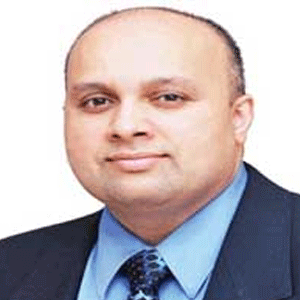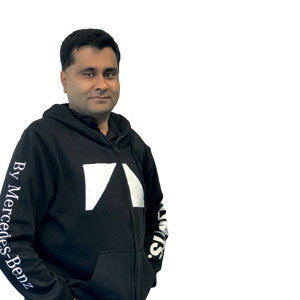THANK YOU FOR SUBSCRIBING

Addressing Engineering Challenges of Increasingly Complex Automobiles
Sandeep Sovani, Global Director-Automotive Industry, ANSYS


Sandeep Sovani, Global Director-Automotive Industry, ANSYS
Three key changes in automotive engineering are transforming cars into complex electronic machines than mechanical machines. From an engineering perspective, this means that virtually every part of the car is undergoing a major redesign. For instance, the door lock apparatus, which used to be a small mechanical device, has now been replaced by the new electronic Passive Entry System, which is comprised of electronic sensors, controllers, actuators, and advanced software algorithms that are much more complex. First, government regulations for fuel economy and consumer appetite for greener vehicles are pushing auto-makers to add electric drives to vehicles. Secondly, the amount of electronic sensors, actuators, and controllers in vehicles are growing rapidly to take the performance, safety, and comfort of vehicles to new heights such as in driverless cars. Thirdly, as consumer use of smart electronics is on the rise, we’re also seeing an uptick in the demand for more infotainment devices and smart interfaces in cars.
While these innovations are a delight to consumers, they’re giving jitters to automotive executives who are worried about the rising complexity of vehicle engineering. The chances of an engineer failing to uncover and address potential catastrophes are directly proportionate to a vehicle’s design complexity. How can this be managed while still delivering top-of-the-line products and confidently pushing the boundaries of innovation?
The Early Days–Simulation and the Auto Industry
The automotive industry was an initial adopter of simulation and has been leveraging this technology for the design and development of vehicles for several decades. Simulation allows automakers to virtually test and analyze an entire vehicle and its parts even before physical prototypes are made. It can help optimize a vehicle for safety, fuel economy and passenger comfort.
When compared to the physical testing, simulation is less expensive and can reveal results much more quickly. Because of this, car companies can truly optimize designs by performing thousands of “what-if” analyses, which would be prohibitively expensive and lengthy through any other means.
For instance, car makers routinely study the aerodynamic performance of hundreds of different vehicle body shapes and choose the one that gives the best gas mileage. Likewise, car manufacturers also perform hundreds of crash tests on the computer to uncover and address potential safety issues before finalizing a design and subjecting it to physical crash tests.
To rise up the challenges of designing increasingly complex systems and components in today’s vehicles, car makers need to make three changes to their existing simulation processes.
Multiphysics
Today, over 85 percent of engineering simulation performed by automotive companies is “single physics” simulation which studies a single physical effect in isolation. For example, the mechanical strength of a brake rotor is studied separately from the cooling air flow of the brake. When using this approach, potential failure modes that occur when those phenomena intersect aren’t recognized and may remain untested. The potential consequences are apparent product failure.
With increasing vehicle electrification, the close interplay of multiple physics is on the rise. For example, in an electric traction motor, electrical, magnetic, thermal, fluid, structural and acoustic aspects are all tightly coupled. The cooling air or liquid flow affects the temperature; the temperature affects the electromagnetic, which in turn affects the efficiency of the motor as well as structural vibrations that determine noise produced by the motor.
Simulating multiple physics together is critical to overcome these modern complexities and to develop designs that are optimum and have counter measures against a wide swath of failure modes. Simulation tools that seamlessly bring together multiple physics are now increasingly available and auto companies need to adopt this technology as one step in overcoming new product complexity.
Models Based Systems Engineering
Auto companies should be looking to employ simulation solutions that combine high-fidelity component simulations with holistic system behavior models as another step in addressing complexity.
Today, automotive companies are accustomed to simulating and optimizing vehicle components separate from each other. With the rise of complex systems, this methodology is no longer effective and the focus needs to shift towards Model-Based Systems Engineering (MBSE), an approach where systems and components are simulated together. Such simulations accurately capture behavioral characteristics of individual components under real life operating conditions that they would experience as part of a bigger system, and therefore, enable more accurate and extensive predictions of system behavior. Take the example of the Passive Entry System mentioned earlier. To confidently predict the performance of the system, its simulation needs to include high-fidelity models of all components such as antenna receptivity, actuator solenoid electromagnetics, and signal interference in cables, in addition to a system level model of their interactions.
Hardware-Software Co-Simulation
Modern cars have many dozens of micro-computers on-board performing various control and computation functions. The software programs that run on these microprocessors – referred to as embedded software–is becoming increasingly important in automotive engineering. Believe it or not, there are actually more lines of embedded software code in a modern car than in a modern commercial airliner. Managing such an enormous amount of software is creating challenges of its own.
Just like hardware components, embedded software programs also need to be tested for a variety of operating situations to ensure flawless performance, especially in the case of safety critical systems such as airbags.
Hardware and software need to be co-simulated to accurately predict the performance of the system under various conditions. Additionally, automotive companies need to use tools that automatically generate embedded software code that is pre-certified to highest safety standards such as ISO26262 ASIL-D thus, fundamentally enhancing safety while eliminating time and expense of extensive unit testing. Vehicle electrification is making automotive systems more complex leading to more unforeseen catastrophic failure modes and missed optimization opportunities. Leveraging engineering simulation to quickly and inexpensively test vehicle systems and components for a wide-range of operating conditions, design variations, and potential failures is key to overcoming this rise in vehicle complexity. Automotive companies should make three changes to their current simulation processes to meet these new design hurdles: Enable multiphysics simulation, adopt model based system engineering methods and perform hardware-software co-simulation.











